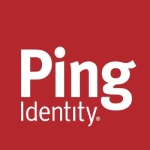What is our primary use case?
We use it to make requests and show the information that the users have, as well as for attestation.
How has it helped my organization?
It saves us time and has increased employee productivity when it comes to provisioning users or systems. It has changed the way things are done, and people who had been doing manual work are doing something else at the moment.
We now have standard processes, the whole flow when a new user comes in; what happens and when. It's always done in exactly the same way. We know that it goes from start to finish in a certain way and we can be sure that it's done in the correct way when it's automated. The master data is always used in the same way.
It has also impacted our cloud IT strategy because we have to be there to manage the user accounts and all, in that environment. That's on-going work at the moment. We haven't implemented or started any processes in production yet.
In addition, it has helped to reduce helpdesk calls, according to the information that we have seen.
What is most valuable?
For me, personally, the automation is the most valuable feature. I don't have to do things manually, like creating user accounts and provisioning them to the target systems.
We are familiar with the policy and role management features and we are using some of them. They are very hard to define, but they are also very powerful in a way. You have to define them clearly before you start using them.
One Identity Manager is also flexible. If it doesn't have a feature that you want, out-of-the-box, you can customize it by creating scripts or modifying the schema. But you usually need consultants to do the job.
What needs improvement?
This is getting at really detailed functionality, but the system role manager, or some of the roles that are inside Identity Manager, are limited to one user. It would be more flexible if these responsibility roles could be attached to many people. That's an issue for us at the moment.
I would like the ability to have different user accounts and to have a flexible way to order things. For example, if you have a domain with a lot of sub-domains, for the end-user it should be easy to order to these other environments. But you would have to have sub-identities. We have tried to create different kinds of solutions for this.
For how long have I used the solution?
Three to five years.
What do I think about the stability of the solution?
This version, version 8 has been working fine. Version 6 was horrible for us. The performance wasn't good at all, but our experience now with performance and stability is good. We are happy now.
What do I think about the scalability of the solution?
When it comes to adding other users or a growing environment we haven't had any issues. At the moment, at least, we have been able to add features and functionality, and everything has worked fine.
How are customer service and technical support?
We have only used technical support through our partner/consultant company. We haven't been in direct contact with One Identity. Everything has been okay.
Which solution did I use previously and why did I switch?
We had a solution that was built in-house before we migrated to One Identity. The old solution didn't have the automation features and provisioning features the way that this product does. The old solution was more manual with a lot of built-in scripts. It was hard to maintain or to create extra features.
How was the initial setup?
Our initial setup was about three years ago, but we did the migration from version 6 to 8. That was almost the same. It was a really big project, or it felt like it.
The initial go-live for the product overall was over one weekend, but the work before that took a year. There were ten people involved during that weekend. We had some time-outs during that year though, because there were some other big projects.
The setup was complex because we did a lot of things. It wasn't only our project, because it was HR and the organization. It was not only the technical part, "next, next, next." It included changing the processes and standards in the company overall.
In terms of our implementation strategy, we added a totally new HR program, to get the master data up and running and correct. And then, of course, we had to work on how the organization is defined and have master data for that, and the roles to be used and the master data for that. And we had to get overall processes standardized.
There are two-and-a-half people working on the solution now, doing daily maintenance.
What about the implementation team?
We had a partner, Infragen, do the integration. Our experience with them was good. They did good work and we had good cooperation, overall.
What was our ROI?
The managers are satisfied when things are automated, when people are coming in or going out, because they don't have to do the work. They just contact HR and it's automated from there. People know that it's one place where you can do everything: make the request, the attestation side, and compliance is also automated and in one place. That's what people want.
Which other solutions did I evaluate?
Microsoft was one of the solutions we looked at, as well as some small Finnish companies. We went with One Identity because of the features. Somebody had already made the stuff that we needed, the functionality that we needed was there and didn't require so much customization. And the partner that was able to give us the solution was also a factor in our decision to go with One Identity.
What other advice do I have?
Keep the scope small in the beginning, so you don't do too much. Go live and then add more features on the way because, otherwise, it can go on for years, and you never get anything done. Also, don't start to customize features too much. Try to use what comes out-of-the-box and try to implement it that way. Somebody has thought of these things already. In most companies, a lot of these things are probably done in the same way.
I would rate One Identity Manager at eight out of ten. There's always room for improvement, but I'm pretty satisfied.
Disclosure: PeerSpot contacted the reviewer to collect the review and to validate authenticity. The reviewer was referred by the vendor, but the review is not subject to editing or approval by the vendor.















